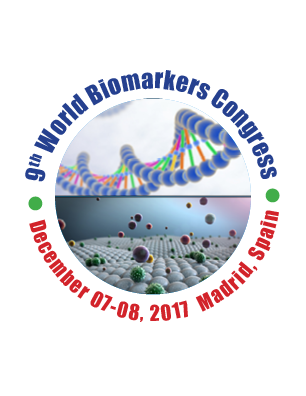
Amanda Costa
Federal University of Sergipe, Brazil
Title: Advances on fl ow cytometry and new immunophenotypic markers on AML diagnosis, prognosis determination and overall survival
Biography
Biography: Amanda Costa
Abstract
Even though there has been improvements in the understanding and treatment of acute myeloid leukemia (AML), not much advances are noted when it comes to outcome and survival. It is still substantial the association of AML to a poor prognosis followed by low remission and survival rates, where 60‒70% of adult patients reach complete remission, but only about 25% survive with chances of being cured. Although younger patients show a 5-year survival rate of 62.8%, there is a decrease for people older than 65 years that hits 4%. AML diagnosis remains challenging, being cytogenetics and molecular biology primary tools for risk stratifi cation and prognostic determination. Moreover, flow cytometry has recently stood out as a useful tool in AML diagnosis, classification and treatment evaluation, for being able to characterize heterogeneous populations of blast cells and analyze multiple parameters simultaneously. Important improvements in fl ow cytometry instrumentation and new analytical strategies were obtained, nevertheless, there are still limitations regarding new immunophenotypic markers for AML diagnosis, highlighting the need of new markers in clinical routines, what would increase its diagnosis and prognosis value, and also be useful for monitoring minimal residual disease (MRD) and improvement of new targeted therapy. Some research has been developed around the world to evaluate the effi ciency of incorporation of new markers on AML immunophenotypic panels, which has demonstrated a relevant association with the development of the disease, either for its association to a decreased survival and poor prognosis, for being a possible therapeutic target or because its eff ectiveness as marker for MRD.

